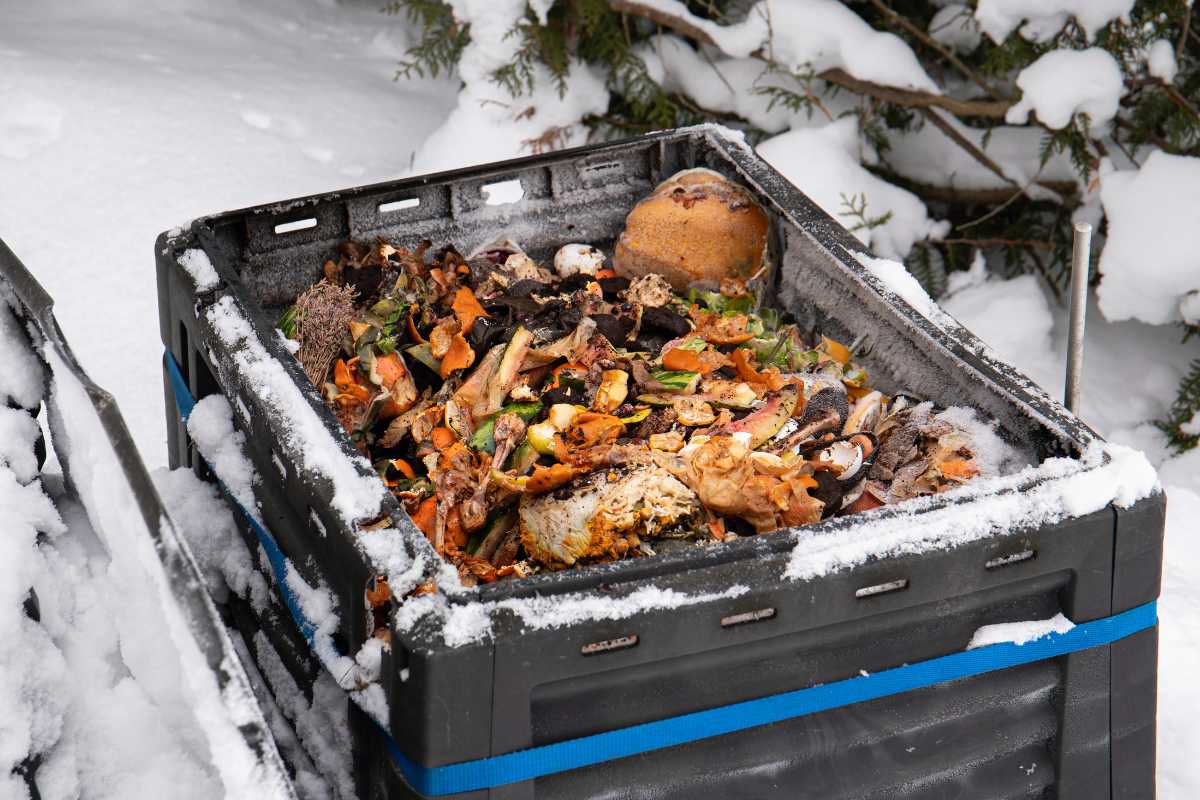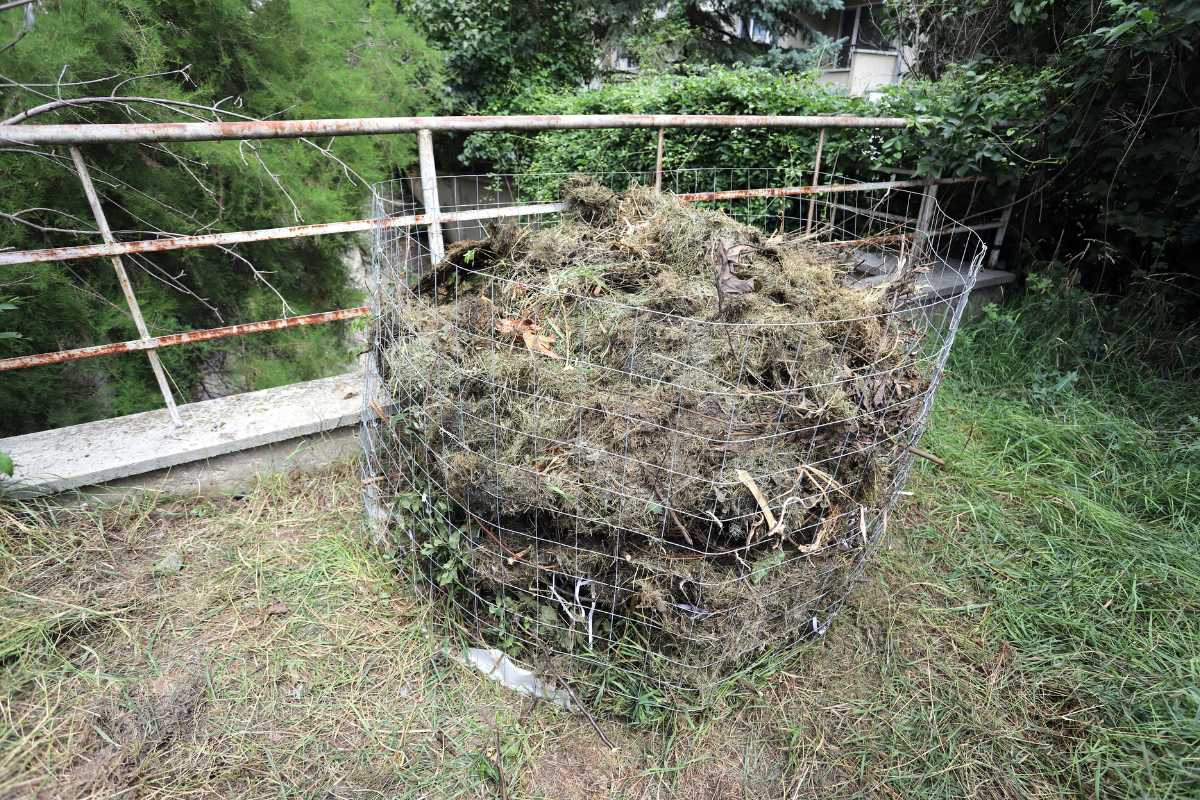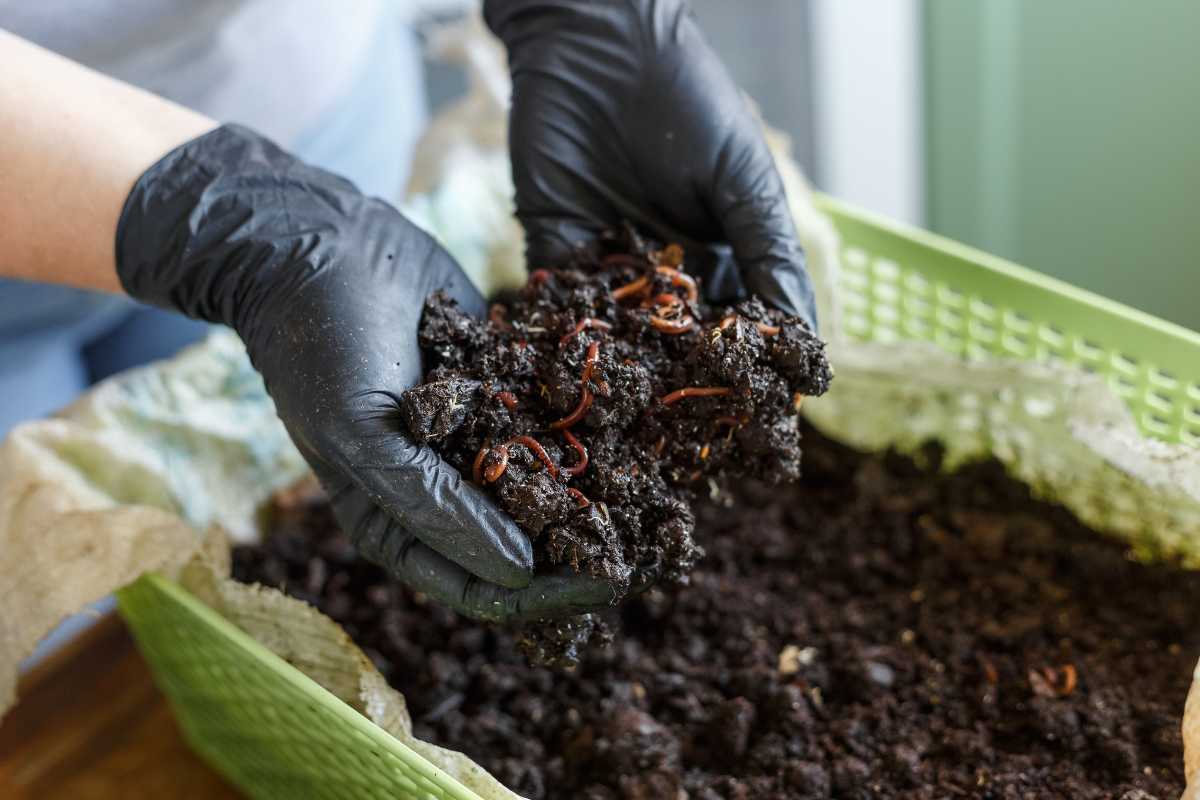Composting is a great way to keep your yard and garden looking beautiful. Compost adds nutrients for healthy plant growth.
What if you don’t have access to fresh compost during winter? Can you compost in the winter?
If you live somewhere that gets cold during the winter months, it can be difficult to get started on your compost pile. Luckily, there are ways to make sure your compost stays active throughout the year.
In this article I’m going to share my top five tips for year round composting, so you can compost on cold days.
Can You Compost in the Winter?

Yes, you can definitely compost in the winter. While winter might be when you do the least amount of gardening, one activity that you don’t have to cut down on is composting.
There is no reason that you should stop composting during the winter other than you may not want to brave the cold for those regular trips to the compost pile!
Composting in winter is pretty much the same as composting at any other time of the year, except you won’t have as much garden waste and plant brown matter to add. You’ll most likely have the same amount of food scraps, coffee grounds, and other ingredients from the kitchen and home.
One of the reasons people may feel like they should stop composting in the winter is that the cold slows down decomposition. While this is true, you can do many things to prevent your compost heap from becoming too chilly and keep your pile working throughout those colder months.
If you have a hot compost bin, compost tumbler, or any other enclosed composter, you can continue using it in the same way as usual.
For this article, the steps I will discuss for how to compost in the winter is using the traditional open-air composting process.
How to Compost in the Winter?
Composting in the winter is your preparation for spring and is helped by your preparations during fall, so you should prepare your compost heap accordingly before you start winter composting.
During the fall, you should remove any finished compost and add it to your vegetable patches to get them ready for the spring. That makes winter the perfect time to start building up your compost reserves again.
Before you add any dead leaves or other fall debris, dig out your useable compost. It’ll be easier to access the finished compost before you add to your pile.
If you have an outdoor compost pile and it’s standing on the ground, you can dig out some of the soil underneath. That soil will contain nutrients that have been washed down through the compost by rain. You can then start adding fresh compostable items like kitchen waste to your heap.
If you are using an open-air compost heap, you should have two sections, one that you have built up and another that is relatively empty, that you can use for turning your compost over.
For clarity, I’m going to call the side that is empty, side one, and the side that is full, side two.
In the fall, empty side one completely if it is not empty already. Remove any usable compost and put all other materials off to the side. Then start turning over side two into side one.
Fresh materials should go in first, with decomposing materials on top. Once all the materials have been turned over, and you have uncovered the usable compost from side two, remove all the compost you can and add it to your garden.
During the winter, you can now start adding materials to side two. To speed up the decomposition process and microbial activity, and to help insulate the new materials, you can add a layer of decomposing materials from side one for each layer of fresh materials you add to side two.
Decomposition only occurs in warm temperatures, so keeping your heap warm during the cold months is essential. You can do this by adding layers of cardboard or old carpet to the top to keep the frost off, and to contain the warmth. Trash bags filled with straw or straw bales can also be good insulators.
If the weather is very wet where you are, you may want to cover your heap to keep excess water out. Compost heaps can suffer from excess moisture in the winter months, so you should keep an eye on how moist your compost is getting. Add dry straw or wood chippings if you feel it has already gotten too wet.
6 Tips for Winter Composting
Here are my top tips for composting in the winter in a cold climate.
1. Save your brown materials in the fall

If you plan on composting throughout the winter, remember your greens to browns ratio. The chances are that you will still be adding a lot of green material in the form of kitchen scraps, but you might fall short on the brown material.
You can supplement the browns with shredded paper and cardboard, but it is useful to keep a bag of dry fall leaves and twigs, so you can periodically add them to your compost throughout the winter.
As the colder temperatures may slow down decomposition, don’t add things that will take a long time to decompose.
Chip down any larger branches and shred any woody materials, so they will be easy to break down. See the best chipper shredder options.
2. Keep your compost warm
Not only will warmth keep your compost decaying through those frosty winter months, but it will also attract worms, insects, and beneficial microorganisms that will help to break down the organic matter.
Compost will generate its own heat, so by insulating it, you will be able to trap in the warmth and keep your compost healthy throughout the winter.
3. Keep your compost from getting too wet
Wet compost means a sludgy, smelly mess. Excess moisture can cause issues in your compost.
You will probably be adding more food waste and greens in the winter. There will also be more rain and dampness in the air.
If you are using an open-air composter, then you may want to consider covering it in the winter, especially if it is particularly damp or rainy where you are. You can also attach insulation to the underside of the cover to help keep the compost warm.
4. Don’t turn your heap as often – if at all
Turning your heap in the winter may mean that the precious heat will escape, and so it’s best to keep it to a minimum during the cold winter weather.
If you continue to add a good mix of materials, you shouldn’t need to turn it until the spring.
5. Try Vermicomposting as an Alternative

Worm composting is an excellent way to get rid of kitchen scraps throughout the year. Composting worms help break down organic material so they’re ready for use by plants. They also create worm castings which are an excellent fertilizer.
You can vermicompost using a homemade system consisting of a large bucket and some PVC piping. Worms prefer an average outdoor temperature of 40-80°F.
If the temperature fluctuates too high or low, they won’t be able to survive. You can keep your worm compost indoors if you live in an area where there’s cold weather for most of the year.
6. Keep at it!
By composting during the winter, you will maintain a healthy compost pile to keep it in tip-top shape for the spring.
Keeping an eye on moisture levels will ensure you won’t have any unpleasant surprises come the spring.
Plus, not only will you be creating more compost, but regular trips to your heap will deter any critters from setting up their winter home in your compost.
Composting in the Winter Final Thoughts
Composting in the winter isn’t really any different from composting at any other point of the year.
The biggest differences are that you won’t have as many opportunities to add compostable materials to your compost heap, and you’ll have less finished compost.
That being said, you can still make the most of your composting efforts during the winter by following the simple guidelines above.
Here are other compost articles to learn more about composting different ingredients:

